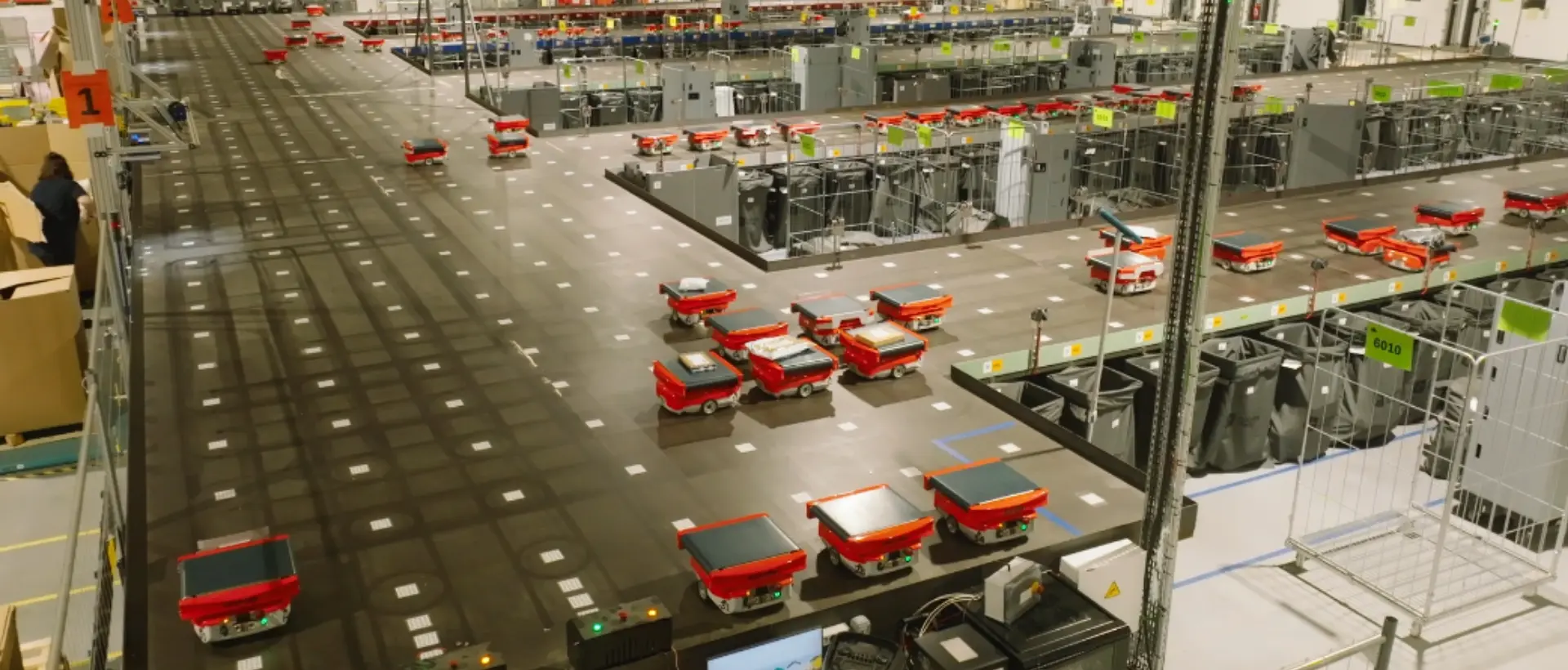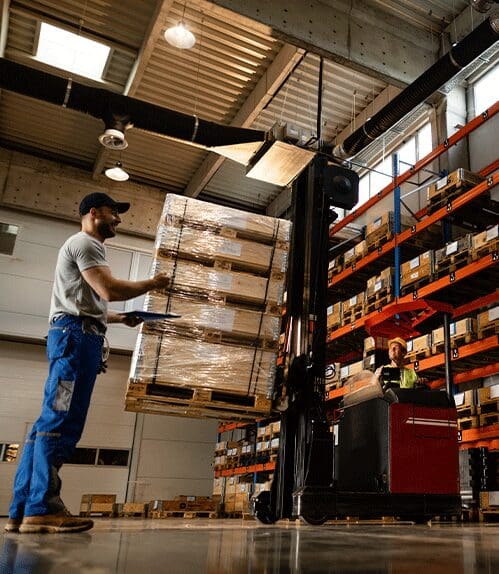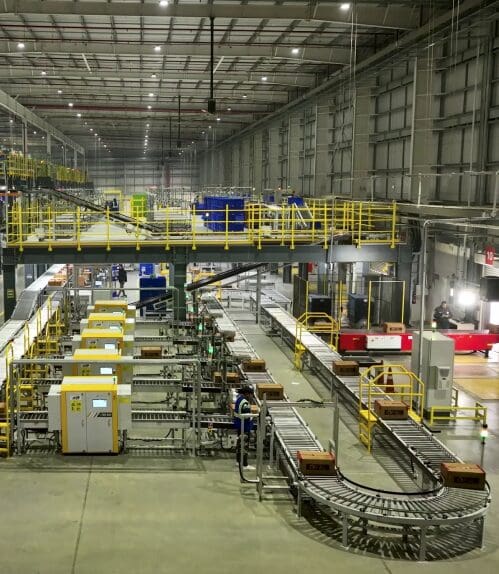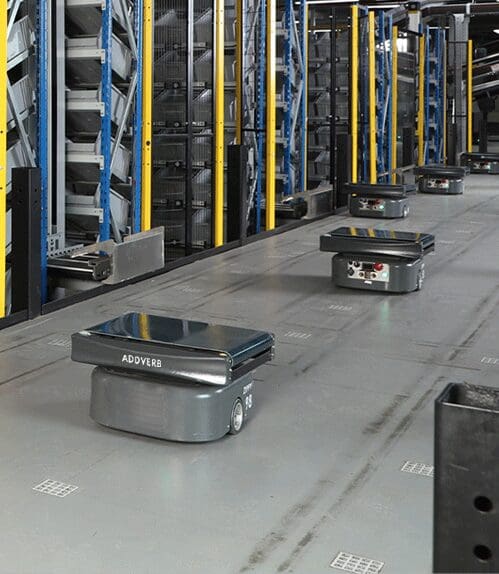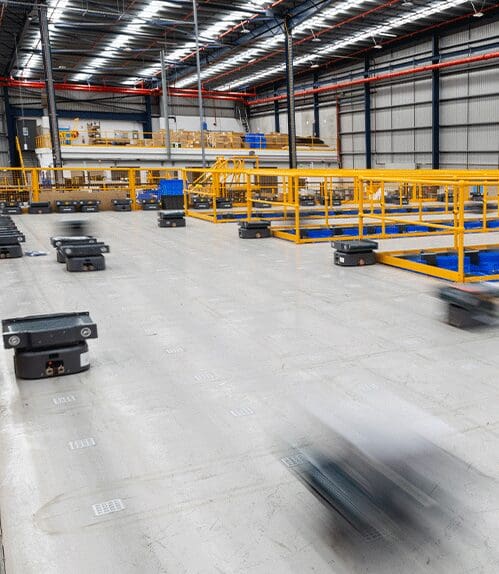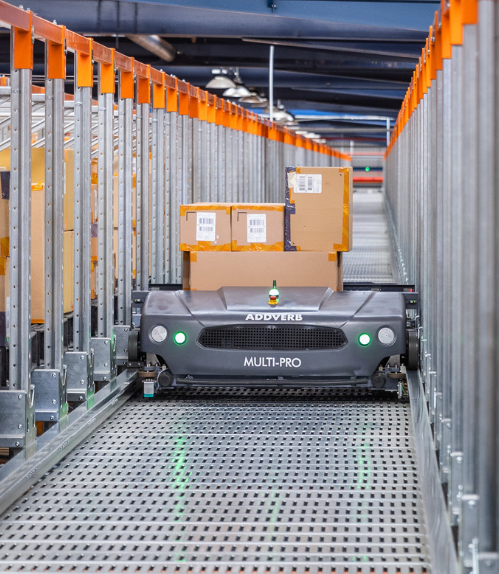Inhaltsübersicht
Have you ever thought about how fresh fruits, dairy and other household essentials are delivered to your doorstep within minutes and in fresh condition?
A recent report stated that India’s quick commerce sales saw over 280% growth from FY 22-24, culminating in around USD 3.3 billion in FY24, with a projection of nearly USD 9.95 billion by 2029. This skyrocketing growth is putting serious strain on grocery warehouse operations. In order to keep up with the pace, many grocery businesses are now turning to automated operations to minimise waste and create a reliable supply. In this blog, we’ll uncover five powerful ways automation is reshaping grocery warehouses, from tackling freshness challenges to mastering the race for speed.
What problems does Grocery Warehouse Automation solve?
Before we get into finding solutions, let’s first start by listing down your challenges. If you own a grocery warehouse, you must be facing one or more of these problems listed below:
- Temperature & Environment Management: Balancing different temperatures like ambient, chilled, and frozen storage zones is tough. Frequent door openings, layout issues, or power glitches can easily break the cold chain and cause spoilage.
- Stock & Inventory Management: Grocery inventory spoils quickly and must be managed using FEFO or FIFO labeling. The operations of dark storage facilities complicate storage priorities and placement even further.
- Visibility & Real-time Updates: Many warehouses have difficulty maintaining a consistent view of consumable grocery inventory and item expiration across several zones and order fulfilment centers.
- SKU Variety & Seasonal Volatility: A Grocery warehouse handles several thousand SKUs that vary in packaging, type and storage.
- Quick Order Fulfilment: When trying to fulfill orders in 10 min, changing mid and cancelling orders only to quickly pick, pack, and ship in less than 10, allows for no room for error.
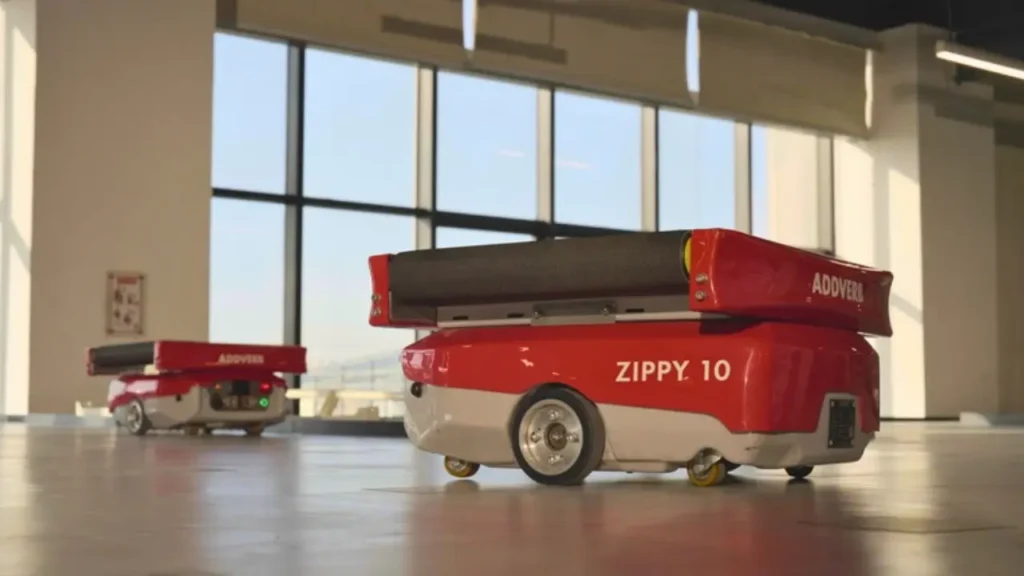
As Zepto’s co-founder Aadit Palicha pointed out, reducing wait times was not just a feature but a necessity. Customers often complained when deliveries took 2–3 hours, pushing the company to strive for much faster fulfillment.
What are the 5 key benefits of Grocery Warehouse Automation?
Grocery Warehouse Automation is providing from ensuring that fruit is always fresh to 10-minute delivery time guarantee, here are the five ways which make automation solves the challenges for grocery warehouse:
Accurate temperature management, less waste
Freshness is the number one priority when it comes to groceries – even changing the temperature for a few minutes can spoil an entire load. Automated cold storage has begun to streamline the process by maintaining stable conditions within refrigerated, frozen, and ambient zones. Additionally, warehouse robots and conveyors facilitate pre–packaged products from these temperature zones while maintaining a temperature– controlled environment. The result is better freshness and shelf-life, and a customer who is assured to receive a fresh product every time.
Better inventory tracking and expiry management
With thousands of fast-moving SKUs, manual tracking often leads to expired or misplaced items. Automation now enables warehouses to automatically follow FEFO/FIFO rules, track expiry dates, and store items based on how quickly they sell.
Tracking in real-time, transparency, and predictive insights
Combining a Warehouse Management System (WMS) and Order Management System (OMS) will provide views in real-time across the different zones. This enables the following:
• Tracking of movement dates, batches and stock levels with each channel.
• Predicting demand and understanding seasonal spikes.
• Predicting replenishment, determining picking and sorting ahead of time, rather than being reactive.
Rapid, efficient order fulfilment & movement of goods
Automation Systems such as Conveyors and Robotic Sorters lead to efficient sortation systems streamlining ways that products are moved, picked, packed and dispatched in real-time. Many warehouses are currently using these systems to manage mixed-category orders and small ship to order batch products, minimize dock congestion, cross-contamination, and meet hyperlocal/quick e-commerce delivery service levels.
Why Grocery Warehouse Automation matters ?
The future of grocery retail is going to be fast, transparent, and high-quality. Customers are now demanding delivery in minutes, that the order is accurate, and the food is fresh; they also expect accountability when unsold or returned food occurs.
Companies that fall behind will not only lose margins but also customer’s trust. Automation will allow warehouse operations to meet increasing demands, reduce waste, improve safety, and scale sustainably.
Schlussfolgerung
Grocery Warehouse Automation is no longer a futuristic idea, it’s the present reality shaping how you buy, store, and deliver food. It’s what keeps the cold chain unbroken, shelves full, and customers smiling.
For businesses, embracing automation isn’t just about staying efficient; it’s about staying relevant in a market that never stops moving. Faster adaptation is bound to provide businesses with a competitive edge.

